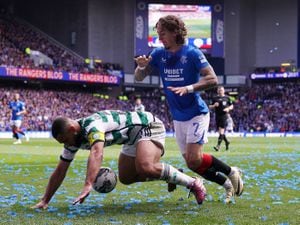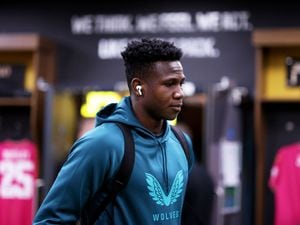'Out of Darkness Cometh Light': The historic night which lit up Molineux
For Wolves, the age of enlightenment began on Wednesday, September 30, 1953.
That night saw one of the most illustrious, nay illuminating, occasions in the club's long history, as the new floodlighting system was inaugurated at the Molineux ground.
A curious crowd of 33,681 spectators went along to watch the spectacle and were rewarded with a 3-1 victory by Wolves against South Africa, who were the opposition for the epic occasion.
The 1950s saw the advent of football's floodlighting revolution, when at last the technology matched the ambition.
As it happens 'Out of Darkness Cometh Light' is Wolverhampton's city motto. Yet while Wolverhampton Wanderers were one of the first British clubs to have floodlights, the idea was hardly new. History records the first floodlit match being way back in time, on October 14, 1878, at Bramall Lane, Sheffield.
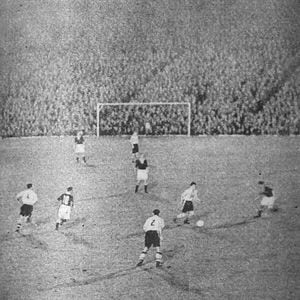
And it was not much later that Shropshire had its first match under lights. The date was Thursday, December 12, 1878, and the venue was the ground of the Engineers, which was somewhere near the grandstand of the racecourse in Shrewsbury.
There were meant to have been four lamps – three powered by portable engines, and one by battery. Alas, one of them was damaged in transit, so they were down to three.
“Two lamps were placed upon each side of the ground near the corners, and reflectors cast the rays in different directions, but each was stationary,” reported the Shrewsbury Chronicle the following day.
“On the whole, the ground was well lighted, and with the four lamps burning the illumination would have been perfect, but occasionally a lamp was extinguished, and the players lost the ball and the spectators the view.”
The lights worked long enough for the Engineers to beat their Newport opponents 3-0. Next night, with promises that the problems would be remedied, and with the admission price reduced to 6d, they tried again.
Before what seems to have been a somewhat smaller crowd, the same snags were manifest. Once more only three lights could be got to work, each light could only illuminate a limited portion of the ground, and from time to time parts of the pitch would be plunged into darkness.
The Engineers won by “two goals and one disputed, to one goal for Trinity”.
These early experiments of football under lights were poorly received, so it's no surprise that it was to be many years before the idea became practical.
Fast forward to the inauguration at Molineux and First Division Wolves, according to the Star's report, "wore their luminous strip". Really? Maybe there's a Wolves fan out there who can tell us whether Wolves literally had a luminous strip (which in those days would probably have involved some radioactivity), or whether our correspondent just meant the gold looked bright under the lights.
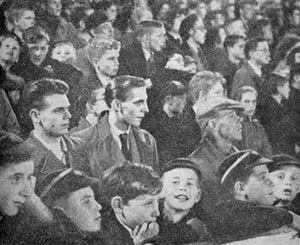
The home team that night included some enduring legends, like goalkeeper Bert Williams, Billy Wright of course, Johnny Hancocks and Jimmy Mullen.
Our reporter, who went under the pseudonym 'Commentator', wrote: "It is doubtful if the Springboks will play before a bigger gate during their tour, and if they like to feel that this shows how much Wolverhampton admired them and the way they recently entertained Wolves, we shall be quite happy."
While some of the football was excellent, and Hancocks and Mullen in particular were in sparkling form, it was those floodlights which made the evening really significant and 'Commentator' says floodlit football sold itself to the Wolves supporters at the first attempt.
"In as many inquiries as I could make among all sorts of conditions of people, from the captains of the teams to the newest woman onlooker, I found nothing but praise for the system or the set-up."
Billy Wright said the lights were easily the best under which he had played in England.
"Players of both sides endorsed this view, and there were no complaints about either glare or shadow, despite the weather-vane effect of the shadow cast by every man on the field."
"Commentator" added: "Mr Stanley Cullis, Wolves manager, who has always been cautious in his approach to floodlighting, was also greatly impressed by the system, which he thought was well worth waiting for until they could be sure of getting the best."
There were to follow some glorious games under the lights to live long in Wolves' fans memories.
Like the packed Molineux night in 1954 when Wolves took on Russian champions Spartak Moscow, or when, just a few weeks later, the magical occasion when the opponents were Hungarian four-times champions Honved, including irrepressible centre forward Puskas.
Things were to get even better in 1957 when the ground's floodlighting was improved. It looks like the original towers were 96ft and new ones were installed taking them up to 146ft. The new lights were used for the first time in a match against Tottenham in October.
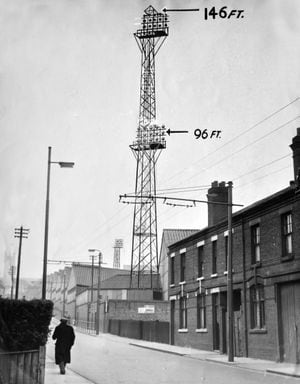
If you're wondering about the Baggies, they were bringing in lights at the same time Wolves were upgrading theirs. Lights were installed at The Hawthorns in 1957 at a cost of £18,000. The first game under lights was against Chelsea on September 18, ending in a 1-1 draw.
Over at the Gay Meadow in Shrewsbury, fans had to wait another couple of years for the floodlighting system, which cost £12,500, to be installed and ready.
Shrewsbury Town's first game under floodlights was on November 21, 1959, in a Third Division match against QPR, although they were used for only part of the game, which was a 3.15pm kickoff.
So for the official opening floodlit game at the Gay Meadow we look to Wednesday, November 25, 1959, with the opposition being Second Division Stoke City. It was essentially an exhibition match and a special souvenir programme was on sale.
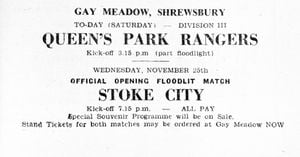
The weather did not rise to the occasion, being atrociously wet, but nevertheless there was a gate of 5,448. Club president Sydney Yates formally declared the new lights "on".
Stoke fielded almost their full team, but nevertheless Shrewsbury ran out 5-0 winners. It was an eventful night for the Town's newest professional, 17-year-old left winger Alan Cornfield, who was making his first team debut. He set Shrewsbury on the winning path with a goal after eight minutes, put on a plate for him by Arthur Rowley, and then proceeded to have a hand in three other goals.
Down the road Wellington Town – they were not renamed Telford United until 1969 – welcomed football under floodlights on March 18, 1965.
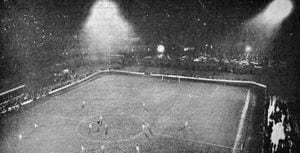
We can do no better than to quote from the Star's report the following day: "Shropshire FA president Harry Hodgson raised his right arm on the Buck’s Head ground at seven o’clock last night – the signal for the £10,000 floodlights to come on and usher in a new chapter in the 78-year-long history of Wellington Town.
"It was a great night for 3,489 spectators who saw Wellington draw 2-2 with Leeds United, whose sporting gesture in sending a team down, despite their crowded programme, was greatly appreciated at Wellington.
"And it was a great night for the Wellington officials too. Despite difficult days in the Southern League, they had the confidence to go ahead with the lights scheme – and none more so than club president Tom Stone, who sponsored the appeal.
"Club chairman Frank Naginton told me (writes Harry Goodwin): 'We have tried to keep faith with our supporters and give them the best facilities. Now we have the floodlights, we shall obviously be thinking about ways to make the most use of them.
“'We shall have to consider what kind of floodlit competition we can join, and, of course, the lights will be a great benefit in training.'
"Mr Naginton revealed that the club are also thinking about Friday evening games."
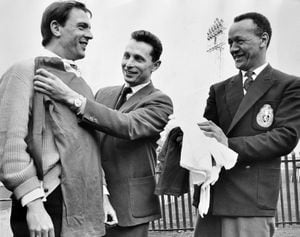
It seems that instead of playing in their familiar white kit, Wellington also used the occasion to wear a special new kit, as our archives include a picture of the supporters' club presenting a new kit of red shirts with white edging, white shorts and red and white stockings, to be worn for the first time in that floodlit fixture against Leeds – whose traditional playing colours are also white.


